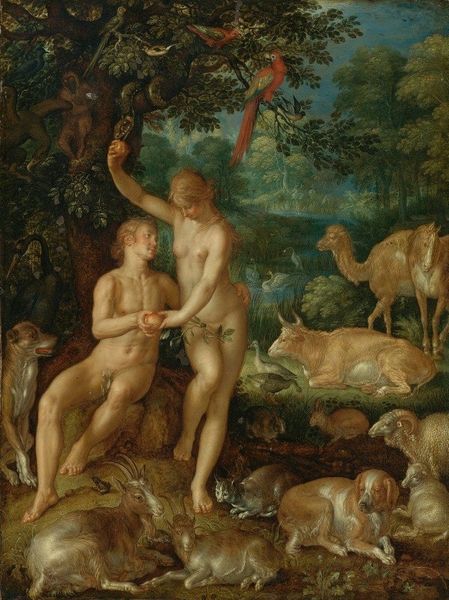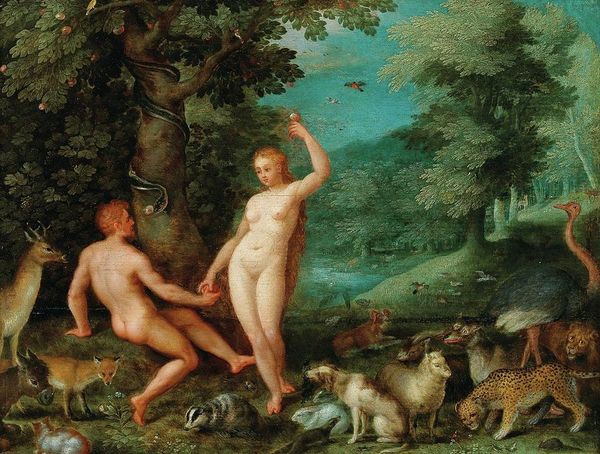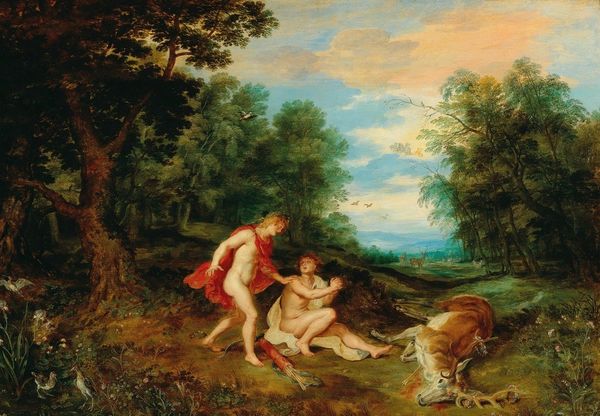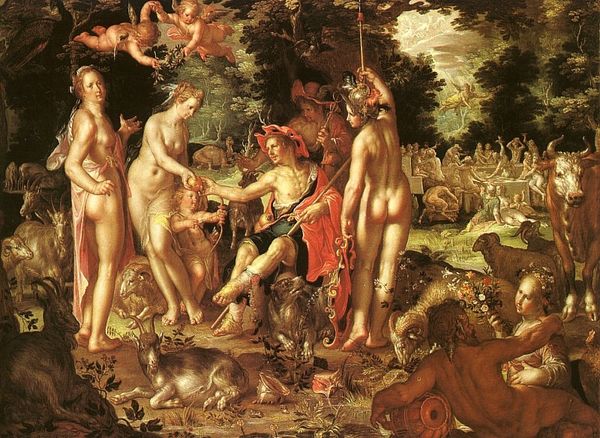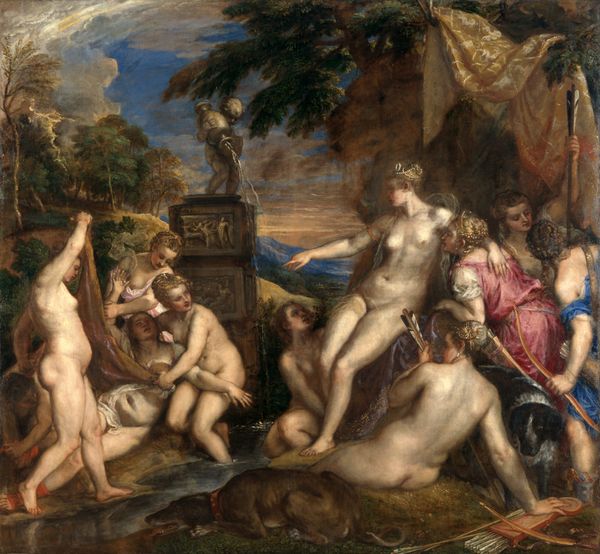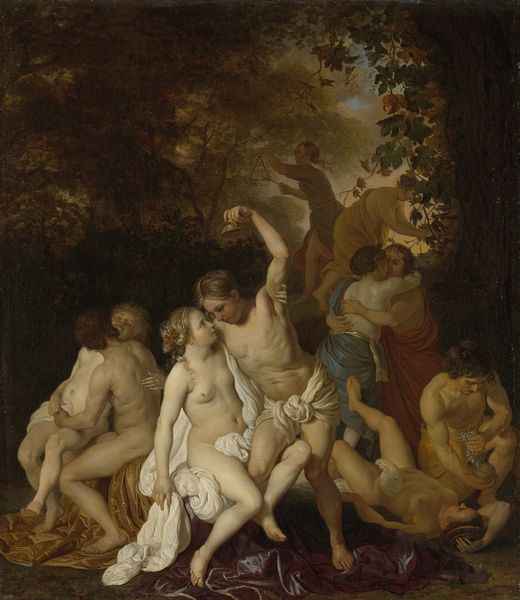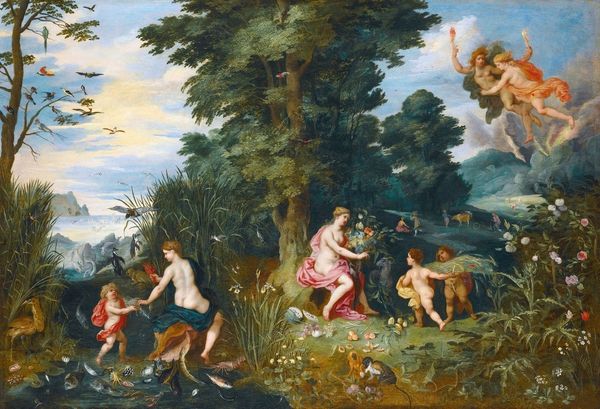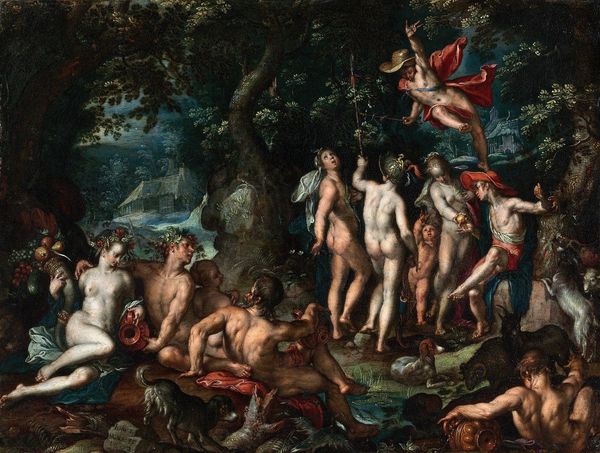
oil-paint
#
allegory
#
baroque
#
oil-paint
#
landscape
#
figuration
#
oil painting
#
history-painting
#
realism
Copyright: Public Domain: Artvee
Peter Paul Rubens painted this scene of the Garden of Eden in the early 17th century. Here, Rubens brings to life this pivotal biblical narrative, brimming with symbolic meaning. Rubens was working in the Spanish Netherlands, a deeply Catholic society. The tale of Adam and Eve served not just as a religious lesson, but also as a commentary on societal roles and morality. Notice how the lush, fertile garden, teeming with diverse animals, represents a world untouched by human sin. Adam and Eve, centrally placed, are idealized figures, embodying a classical standard of beauty. Yet, the serpent's sly presence, coupled with Eve's act of offering the apple, foretells the disruption of this perfect order. Paintings like this one served as moral instruction, reinforcing the Church’s teachings about obedience, temptation, and the consequences of disobedience. To fully appreciate Rubens' painting, researching the theological debates and social norms of his time provides a richer understanding. Art is never made in a vacuum; its meaning is deeply intertwined with the social and institutional context in which it emerges.
Comments
No comments
Be the first to comment and join the conversation on the ultimate creative platform.
